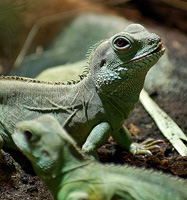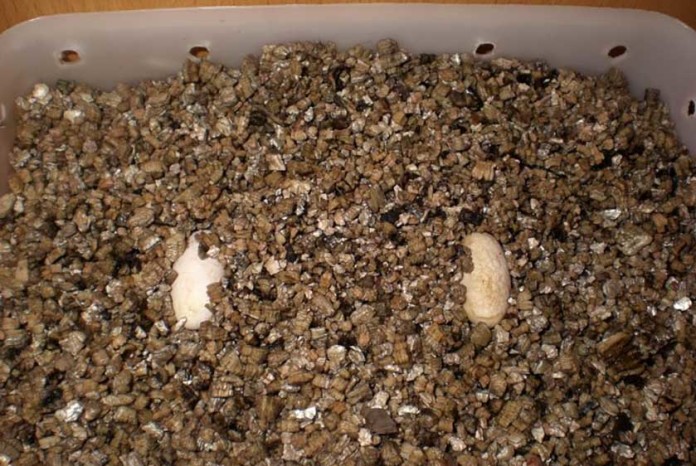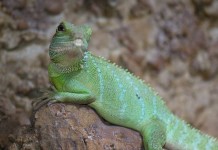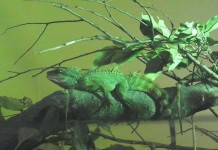The Egg Laying Process
Female Chinese water dragons lay eggs approximately two months after successful copulation. You can identify the eggs on either sides of the female dragon a couple of weeks before the egg laying process actually begins.
Once you are able to feel the eggs, it is important that you build a lay box – a special area for the female to lay the eggs. If your dragon does not find a suitable place, it can hold the eggs or become egg bound, which is a serious complication and can even lead to death.
The lay box or special egg laying area can be eight to ten inches deep, filled with soil or peat moss. This area can be made using Rubbermaid or any other material that holds moisture to help your pet dig the soil.
You should make sure that the contents of the lay box remain moist. The contents should not dry out or get too wet. It is a good idea to pile up moist soil with some moss in the area your female dragon will use to lay her eggs. Female dragons love to dig a long tunnel and your pet may continue digging the soil without laying eggs.
You need to keep a close watch on the female dragon when she starts to dig the soil. Eventually the female dragon lays her eggs in a hole and then buries it. She may remain in the area until she lays all of her eggs inside the hole.
Incubating the Eggs
What you need to know is female dragons cover their eggs extremely well. If you are not aware of the exact spot, you may not be able to find the eggs. Once you identify the egg laying spot, try to pick the eggs in the same direction they are buried. You can then transfer the eggs to a separate area and cover them in vermiculite. It is advisable that vermiculite covers two third portion of the egg when buried.
 You can mist the eggs every alternate day to maintain humidity. Eggs normally begin to hatch two months after being laid. You need to control light and temperature in the incubator for the eggs to hatch properly. The ideal temperature for an incubator is 84-86 Fahrenheit.
You can mist the eggs every alternate day to maintain humidity. Eggs normally begin to hatch two months after being laid. You need to control light and temperature in the incubator for the eggs to hatch properly. The ideal temperature for an incubator is 84-86 Fahrenheit.
Young hatchlings should immediately be shifted to a separate enclosure to prevent damage to the eggs that have still not hatched.










